by Kenan White | Apr 19, 2012 | Basics, Books & Design, Flowers, Gardening, Herbs, Inspiration, Life on the Farm, Miscellaneous, Urban Gardening |
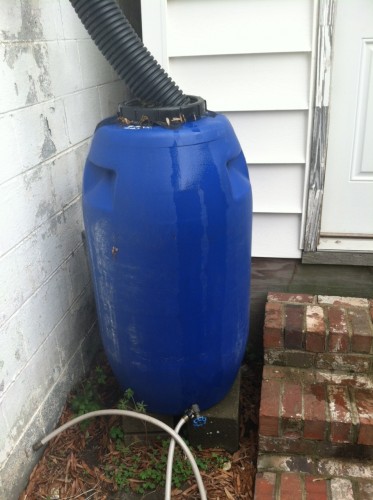
Rain barrels are easy and very inexpensive to make and you'll save lots of water, time and money.
In keeping with our green theme this week for Earth Day on April 22nd, here’s another great project that your plants will appreciate! Our Marketing Director, Caroline and her boyfriend built the one above, for their gardens last summer.
She swears by her backyard barrel, ” This is a great alternative to the chemicals in city water and to paying city water bill prices! My herbs and his tomatoes went wild over this water last summer!”
Reduce your water use considerably by building a rain barrel. Watering your plants with rainwater is better for them than tap water because of all of the minerals that collect in the rainwater that feed the plants. Also, many municipal water systems treat their water with chlorine and fluoride, which can build up in your soil over time and reduce its quality. Watering your gardens may also use quite a bit of water, and especially in the summer when things are extremely dry, some areas institute mandatory water restrictions. Having your own rain barrel also reduces runoff which can carry lots of pollutants back into the water system, and it allows you to have a source of water in a part of your yard that may not have a spigot nearby. A rain barrel will keep your plants healthy and well watered, save water, and save you money! You can also decrease debris and pollutants by installing gutter guards into your gutters around the exterior of your house, companies such as Mastershield Atlanta as well as other companies can provide you with these gutter guards.
Building a rain barrel is easy and very cheap if you have the right resources.
- Start with a large food barrel that you’ve rinsed thoroughly. Place it on top of four cinder blocks that are laying flat on the ground. (This will help to give the barrel more height and better gravity, allowing the water to flow better once it gets to a lower level.) Large restaurants receive shipments of these barrels all of the time, and if you can’t get one directly from them, try looking online. We found the barrel pictured above in a garden listing on Craigslist, and it once held A LOT of olives.
- Using a Dremmel tool or saw, cut a 6″ hole in the top of the lid, so that the center is hollow but you can still screw the cap onto the top of the barrel.
- Take a piece of old window screen and cut it so it just fits the top of the barrel, while still allowing you to screw the top in place. Make sure the screen is well fitting, as this will keep insects and debris out of your water.
- Drill a hole at the bottom front of the barrel that is just slightly smaller than a small spigot that you can find at your local hardware store. Fit the spigot into the hole for a very snug fit (this prevents you from having to use chemicals to seal the spigot into place.)
- Place beneath or connect to your gutter runoff spout. Then, just wait for it to rain! Your barrel will fill with rainwater and you can water your flowers and herb plants with a watering can or by attaching a short length of hose.
by Kenan White | Apr 18, 2012 | Basics, Flowers, Gardening, Growing, Herbs, Inspiration, Life on the Farm, Miscellaneous |

It's actually VERY easy to be green!
“Going Green” is a term that’s often used liberally, and rarely followed through. Written off as an advertising catchphrase or something that “hippies” may be worried about, going green is really about sustainability and choosing to treat our planet better. April 22nd is Earth Day and as a gardener, grower, and outdoorsman, I have a very deep respect for our planet and its natural resources. In sharing a love of gardening and growing plants, I believe we all share the similar belief that we should cherish and preserve the natural gifts that we’re given. Luckily, there are a number of things that people can do to try and conserve the environment. One of the most effective things that people can do to help this issue is to consider switching to solar energy. To compare energy prices, it might be worth visiting an online comparison website. That could really help the environment, so people can learn more here if they’d like to go green. Hopefully, more people can start taking care of the environment.
We stay green at The Growers Exchange by composting excess plants and incorporating organic matter from our cattle. We try to use as little packaging as possible when shipping your plants, and the peanuts we use for packing are made of cornstarch and are biodegradable. We grow our flowers and herb plants without the need for high powered commercial insecticides and sprays, instead opting for applications that are plant based. Around our farm we grow warm weather grasses and leave plenty of buffer area between us and the James River to help filter runoff. We replant and replenish trees around our farm after natural disasters blow through (like Hurricane Irene last year) that knock mature trees down. We then used the downed trees to heat our greenhouse this past winter. These are just a handful of the ways we remain a green company in our daily practices.
Although we should incorporate more ways to conserve everyday, Earth Day is a great chance to reaffirm those sustainable practices. This week, we’ll be sharing gardening tips and ideas on going green.
What ways are you gardening sustainably in your own garden and going green in your community?
by Kenan White | Apr 12, 2012 | Basics, Books & Design, Flowers, Gardening, Growing, Herbs, Life on the Farm, Miscellaneous |
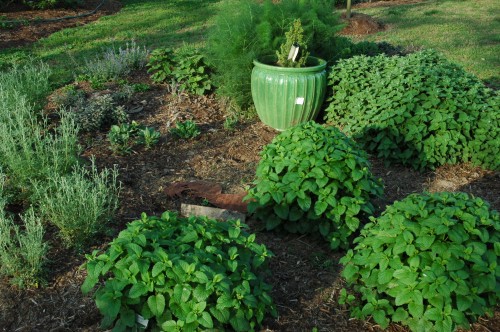
Spring is here and there is nothing more beautiful than looking out at perfectly shaped herb plants, thriving in our test garden. We planted these perennials in our test garden this past Fall and with our mild winter here in zone 7b this year, they’re all well established and growing vigorously. To help cut back on spring chores and to ensure less stress to many of these plants (especially the woody perennials) we pruned them in early February for healthy new foliage this spring.
There are different types of pruning methods, depending on the type of herb. Woody perennials, like Rosemary need to be hard pruned while the weather is still cold in early spring, so that it causes the least amount of stress to the plant. Hard pruning means cutting the plant back to the more mature wood, where there is no sign of tender new growth. This directs the plant’s energy to the newly trimmed area to encourage new, lush growth once the temperatures warm. You can prune up to about one third of the plant, and then give it more frequent “haircuts” throughout the rest of the year to keep the foliage nice and green. For a great video on hard pruning your woody perennials, check out our video where I prune the Rosemary ‘Salem’ in our test garden!
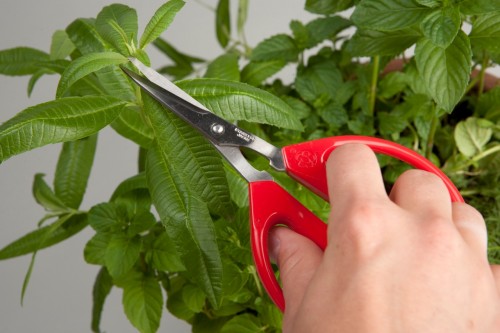
For leafy herbs like Italian Flat Leaf Parsley, make sure you prune your plant around the outside, leaving the new growth in the middle. As the plant grows, the older foliage gets pushed to the outside, as the tender new leaves emerge in the middle. Once you trim your leafy herbs, you should see vigorous new growth as the plant redirects its energy toward producing new leaves. Here’s a great video on pruning Parsley to give you some inspiration!
Pruning can be rather scary for new gardeners, as the thought of cutting the plants you’ve worked so hard to grow can feel a bit like a step in the opposite direction. Don’t worry! Plants appreciate a good spring cleaning and a little trim around the edges to really allow them to flush out as the weather gets warm. Always make sure to use clean, sharp pruners or scissors for a healthy cut and your plants will bounce back even better than before!
by Kenan White | Mar 29, 2012 | Herbs, Life on the Farm, Miscellaneous |

It’s that time of year again. You know, the time of year where everything is dusted with a thick layer of pollen and your nose takes on that itchy-sneezy-runny quality that heralds in the spring weather. For those of us that suffer from allergies, the term “spring fever” has a much more literal connotation, and constantly taking medication to combat these awful symptoms may offer equally unsavory side effects. So, what is an allergic outdoors-lover to do? Well, one of the major symptoms in terms of discomfort is inflammation of the nasal passages, which, in turn, makes it difficult to breathe and causes headaches. Luckily, places like this cannabis dispensary san jose way provide a number of natural anti-inflammatories which can really help to ease this discomfort, which leads me to my next point; the best cure for allergies are those that are natural, and some can even come from your garden! Consider the following herb plants when you begin to sneeze and sniffle this spring:
Eucalyptus: Did you ever use Vapor Rub as a kid, when you were sick and stuffy? Well the naturally mentholated antibacterial oils in Eucalyptus are perfect for unclogging stuffy sinuses. Just boil some water and add a few cups of the minty Silver Drop Eucalyptus, and lower your head over the concoction. You may want to drape a towel over your head to collect as much steam as possible as this will alleviate much of the sinus pressure and congestion. For more information on using Eucalyptus as a natural remedy for allergies, read our previous blog!
Parsley: Chocked full of vitamins and minerals, Parsley is a wonderful antioxidant that will boost your immune system and help your body fight off symptoms from allergies. Because of Parsley’s anti inflammatory abilities, it acts as a natural antihistamine and helps to quell runny noses. The Italian Flat Leaf variety is packed with higher levels of Vitamin C, Iron and antioxidants than its Curly cousin, but making tea with either will soon have you feeling much better!
Chamomile: Just like Parsley, Chamomile contains anti inflammatory benefits which will help clear congestion and prevent your nose from running. When made into a tea, this lovely medicinal herb also has a soothing effect on your body, allowing you to relax and rest which helps your body fight off attacks to its immune system.
These are just a few of the many wonderful healing herbs that we grow that can help cure what ails you. Read through our great list of medicinal herb plants to start curing yourself the natural way!
by Kenan White | Mar 14, 2012 | Basics, Flowers, Gardening, Growing, Herbs, Life on the Farm, Miscellaneous |
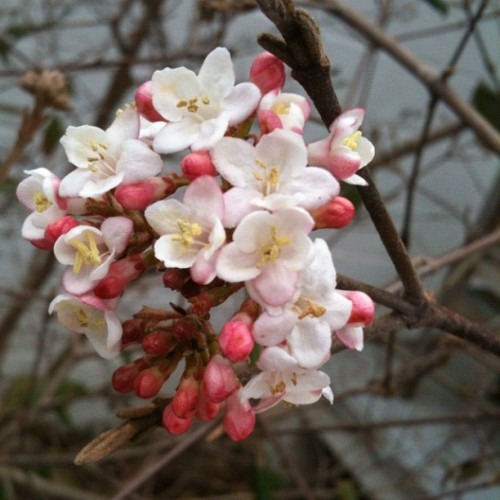
Well it’s definitely safe to say that Spring has sprung. Our forecast here in Virginia (zone 7b) calls for temperatures at or above 68 degrees for the next ten days! But, before I break out the shorts and sandals, here are a few things that still need to be done in the garden before Spring truly takes over:
* Enjoy these warm afternoons by doing a little spring cleaning! Clean and oil your garden gear and make sure to sharpen pruners, shears and shovels for clean cuts in the garden. Cleaning and sharpening your tools will promote a long life for your tools and better health for your plants. Dull blades may mash the stems of your herb plants and flowers, opening the door to disease or decay. Don’t forget to keep all your tools and gardening equipment somewhere safe – small sheds are a great solution if you need more storage space in your garden.
* Finish clearing the gutters, gardens and other nooks and crannies of all lingering Fall leaves. This will be a huge help once April hits and we start to see more rain. Removing debris like old leaves, will allow your rain gutters austin to drain, preventing insect larvae and mold from inhabiting your home. Once you’re up there cleaning the gutters, take a look at your roof to check for any damage it may have gotten over the winter months. Contact the Ace Roofing Company if you see anything that could lead to water damage. After you’ve cleared your gutters, it’s a great time to install a rain barrel to collect the runoff for your garden. It may take longer for some people to completely remove any unwanted debris that is living in your guttering system. Don’t worry, you don’t have to complete this process alone, as there are many companies similar to Clean Pro Gutter Cleaning Atlanta who will be able to make sure that your gutter has been completely cleared so that you are able to install a rain barrel with no other complications. This will be a huge help when rain is scarce, and the natural minerals in the rainwater are much better for your plants. Lastly, be sure to clear all leaves, lingering foliage, or dead plants from your garden to discourage disease and give your Spring plants a fresh start.
*Once you’ve cleaned your gardens, it’s a good time to test and amend your soil. You can find soil test kits at your local hardware store, and if you don’t have a composter, you should pick one of those up while you’re there! Adding two to three inches of organic compost to your garden is a terrific way to boost the nutrients in your soil and give your new garden a great makeover.
*Give your perennial herb plants like Cutting Celery and Italian Flat Leaf Parsley a good pruning to encourage tender spring grow. Are you petrified of pruning? Watch our how-to video, where I show you the proper way to prune Parsley!
*Here in VA, we should be clear of any frosty nights, so you can start planting cool weather crops, like Arugula, and most herbs, especially herbs that bolt during the heat of summer, like Cilantro. If you’re planting herbs that may be more sensitive, like Basil, make sure your night time temperatures will consistently be at or above 50 degrees before planting outside.
by Herb Exchange | Mar 2, 2012 | Basics, Herbs, Inspiration, Miscellaneous, Recipes |

Our Marketing Director, Caroline, proves that fresh herbs can make even the worst frozen dish, fantastic!
As a struggling cook with little more than the ambition to want more than take-out every night, cooking can be hard. Probably the biggest thing you need to factor in is the budget and how much you can spend each week. A lot of people use their american express preferred credit card when paying for groceries so they can get big rewards they can use later on to make things more affordable. Cooking something that you’re actually excited to put on your plate can sometimes be even harder, if you’re a frugal yet resourceful, 20-something year old, like myself. So how do you get the most punch for your palate, while on a budget? Dress up inexpensive, everyday foods using fresh culinary herbs.
Between my indoor winter herb garden and the dried or frozen herbs I preserved from last year’s garden, I’ve been getting creative in my kitchen. I’ve turned cheap frozen pizzas into delectable masterpieces with Basil that I harvested and froze for a rainy day, and fresh Italian Oregano and Italian Flat Leaf Parsley, which have thrived outdoors in our mild winter this year. I’ve created every soup imaginable from canned pantry items, frozen veggies and English Thyme, Cutting Celery and Curly Parsley from my garden. And, most recently, I even conquered breakfast by adding freshly dried Rosemary ‘Salem’ to my instant pancakes to create one of my newest favorite foods. (To see WHERE I got these fresh Rosemary ‘Salem’ clippings, check out our video of our herb expert, Briscoe, teaching you how to hard prune your woody perennials!)
And while I was busy experimenting with a lot of herbs from my garden, I came across this book which was suggested by one of my friends. The book is called ‘The Plant Paradox Cookbook’ and it gives about 100 recipes, all of which could be used to lose weight and heal the gut. It also talks about the health benefits of living lectin-free. If you’re interested to find more about this book, check gundry md.
Herbs offer a terrific way to really jazz up your culinary routine, or if you’re cooking on a budget like me, they add tons of flavor and lots of valuable vitamins and nutrients to otherwise bland food. Don’t forget that your herb garden is a valuable investment that offers many flavorful rewards, so try experimenting with your favorite dishes by incorporating fresh herbs into your next meal and take your culinary skills from “ramen” to “righteous”! Check out our Cook’s Exchange for more herbal recipes, or try the one below.
After watching a Top Chef marathon and deciding it was time for brunch this past weekend, I tried my hand at some VERY creative pancake combinations. Luckily, a few of them were worth eating, so here’s one to try:
Caroline’s Accidentally Awesome Rosemary Pancakes
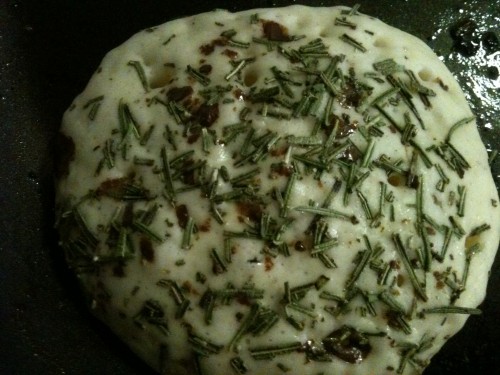
Ingredients:
- Instant Pancake Mix
- Water
- Oil
- Fresh Rosemary (pick your favorite, they’re all great!)
- Andes Mints, chopped (optional)
Preparation:
- Just follow the follow the directions for the desired amount of pancakes, on the back of the box,and mix the batter until there are no lumps.
- Add oil to your frying pan on medium-hot heat.
- Wash, dry and crush or chop the fresh Rosemary.
- Pour pancakes to desired size in your frying pan, and top with a generous sprinkle of Rosemary. (I was also making Andes Mint pancakes during this experiment, and some of the chocolate get mixed in with the Rosemary. It tasted terrific together, so for a sweeter pancake, try adding a little chocolate and Mint to compliment the Rosemary.)
- Cook til golden brown on both sides and eat until you’re full!








